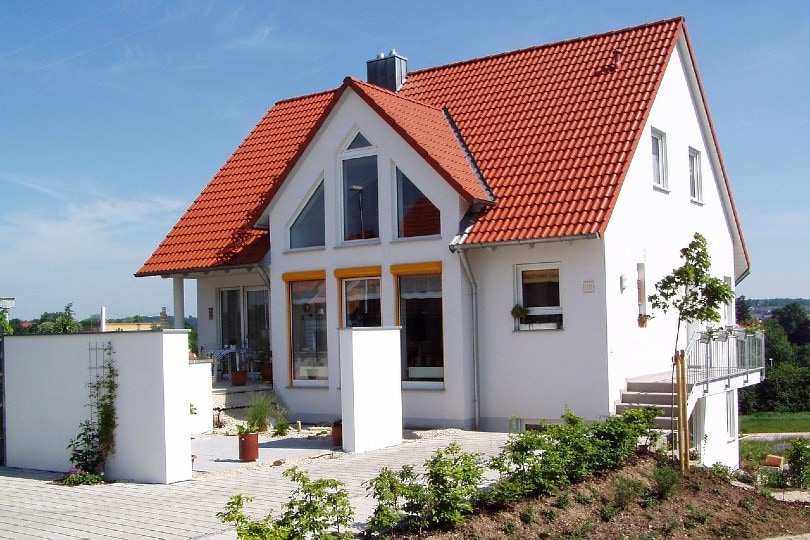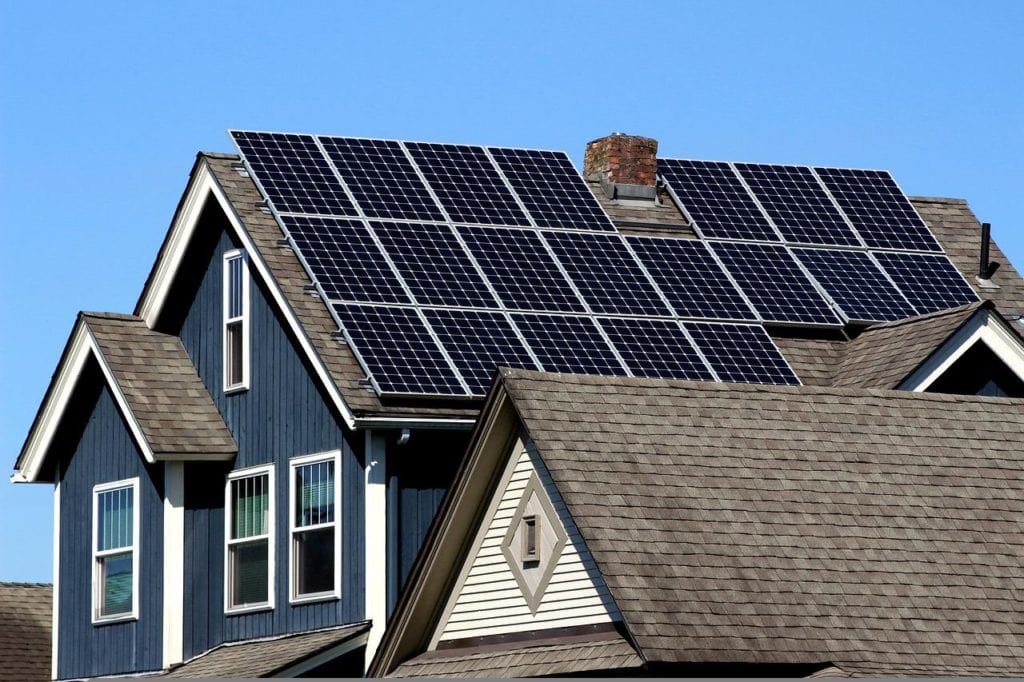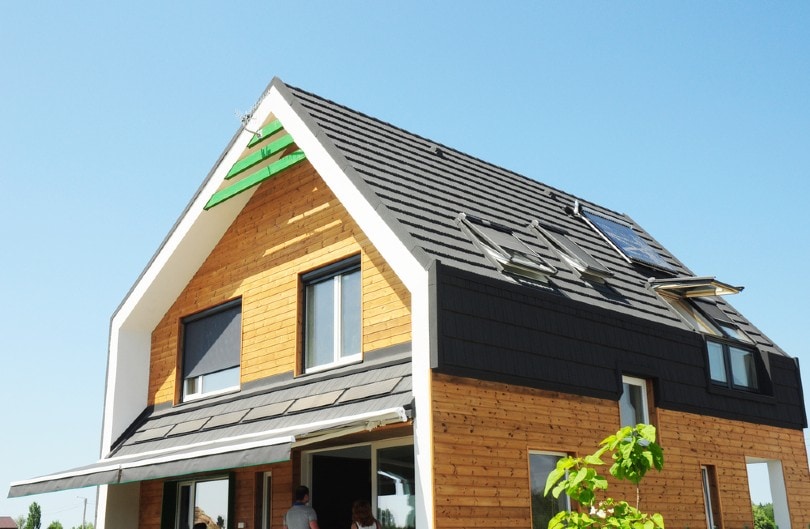What is a Gable Roof? Pros, Cons & Types
-
Shea Cummings
- Last updated:

If you drive through the city, you’ll see many roof styles and shapes. One of the most common roofs you’ll see is the gable roof. Remember drawing a square with a triangle on top as a house when you were young? That’s a gable roof.
As with anything construction-related, there are advantages and disadvantages to doing things a certain way. The same is true with a gable roof. Below we will discuss the pros and cons of a gable roof and its variants.
The Gable Roof Explained
The gable roof has been around for hundreds of years. Some suspect that the inspiration for its design came from the ancient Greeks. Whatever the case, it’s still one of the top picks for roofs today.
Essentially, a traditional gable roof has two sloped sides with the wall at each end (the gable walls) extending up to the peak. This is where drawing a triangle on a square for a house comes from. This roof style is sturdy and practical, but it’s a lot easier to build than some other roofs.
For visual comparison, another common roof is a hip roof. A hip roof is similar to a gable roof because the slopes still meet in a peak. However, it differs because all four sides of the roof usually slope from the peak.
It’s not uncommon to build a roof that combines hip and gable roofs. It makes for a neat-looking roof, but you do lose the bonus of a gable roof being inexpensive if these two styles are combined.

Different Types of Gable Roofs?
There are several different styles of gable roofs. Each has a little bit of a different flair. Quite often, you’ll see combinations of these gable roofs as well.
- Traditional gable roof: Two sides meeting at a peak with gable walls that extend straight up to the peak.
- False-front gable: A low-pitched gable roof with two false gables. Often these gables face the road. It gives the rood a more dynamic shape.
- L-shaped gable: Part of one side or both will extend lower and create an L-shape. This type of gable roof still has the traditional gable walls at each end.
- Gambrel: Instead of a gable roof shaped like a triangle, the gambrel style allows much more use of the upstairs or attic space. You’ll recognize a gambrel style if you’re familiar with Dutch buildings.
- Shed: Have you ever seen a gable roof with tiny walls and another roof protruding from the main roof? This is another gable roof style that allows more living space under the roof.
- Curved gable: This style typically still has the traditional gable walls and includes curved gables or false gables on the roof.
- Cross gable: If you were to look at a cross gable roof from above, it’s T-shaped. For example, it will have two gable ends and an additional one over the front entry.
Advantages of a Gable Roof
There are several big advantages to having a gable roof.
- Excellent Drainage: A gable roof can be sloped at countless angles, but two sides always meet at a peak. This allows rain to drain off easily. It also provides for an even distribution of snow, making a gable roof ideal in snowy and rainy climates.
- Simple and affordable: There are some incredible roof designs, but none of them quite compares to the simplicity of a gable roof. Because of their design, you’ll usually spend less on materials and labor.
- Attic space: There is typically a lot more attic space with a gable roof. Not necessarily livable attic space, but more surface area to allow better ventilation. Which helps keep the air fresh in your home and with efficient heating and cooling.

Disadvantages of a Gable Roof
A gable roof is not the end all be all roof design. They are not without their limitations.
- Potential for collapsing: It’s not that a gable roof is more prone to collapsing necessarily. But because a gable roof can get quite tall and steep, it could be disastrous if it’s not constructed properly.
- Susceptible to the wind: You won’t see gable roofs in parts of the world that get a lot of high winds or storms. Because there is typically a large overhang, this gives the wind something to catch. It’s not unheard of for wind to tear gable roofs off.
- Lots of maintenance: If a gable roof is used in a windy climate, more repairs will typically be needed, such as fixing gutters or replacing shingles.
Frequently Asked Questions (FAQs)
Are gable roofs strong?
Yes and no. If a gable roof is constructed with the right materials and done in a structurally sound way, they are strong. However, if subpar materials or craftsmanship are in play, they are prone to collapse. In addition, they are easily damaged by high winds, so they are not ideal if an area is prone to windstorms or hurricanes.
What type of material can you finish a gable roof with?
Nearly any material you can think of can be used to finish a gable roof. Shingles, tiles, or metal roofing are three of the more common materials you can expect to see. The most cost-effective roofing material would be shingles.
Can I DIY a gable roof?
Unless you’re experienced with roofing, it’s not advisable to DIY a new roof. Ripping off old shingles and putting new ones on is one thing. But if trusses need to be replaced, you’re much better off hiring an experienced contractor to know it’s done right. Because if not, there is the potential that the roof could collapse.
How do I know if a gable roof is in good shape?
If it’s a traditional gable, it’s usually pretty easy to tell because it’s two flat slopes. You’ll want to look out for any spots that look like they’re sinking, as that could indicate structural problems. Also, the general condition of the shingles is a good indicator of roof health. If you’re able to get into the attic to inspect the roof from underneath, that’s another great way to check on the roof’s shape.
Conclusion
To be a gable roof, it simply needs to have gable walls. Outside of that, the roof can take on any shape as long as the trusses are engineered to bear the weight properly. What variations of gable roofs have you seen?
Featured Image Credit: 13902, Pixabay
Contents
